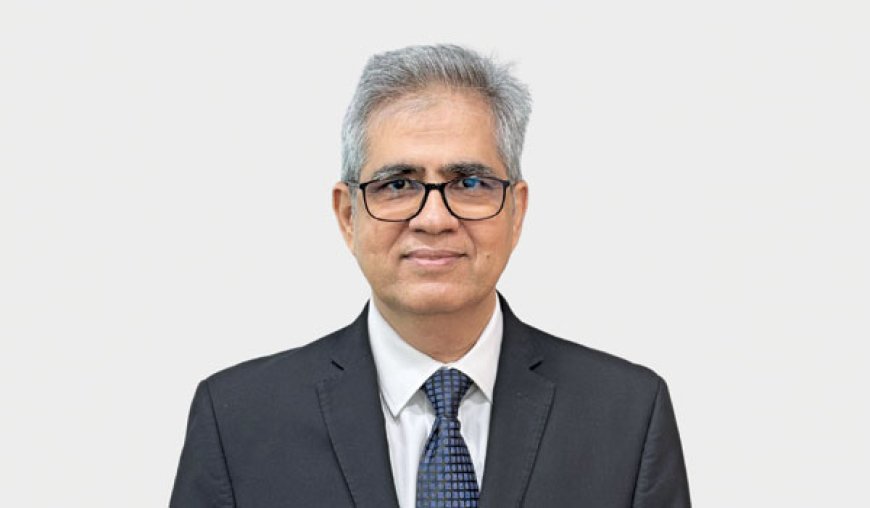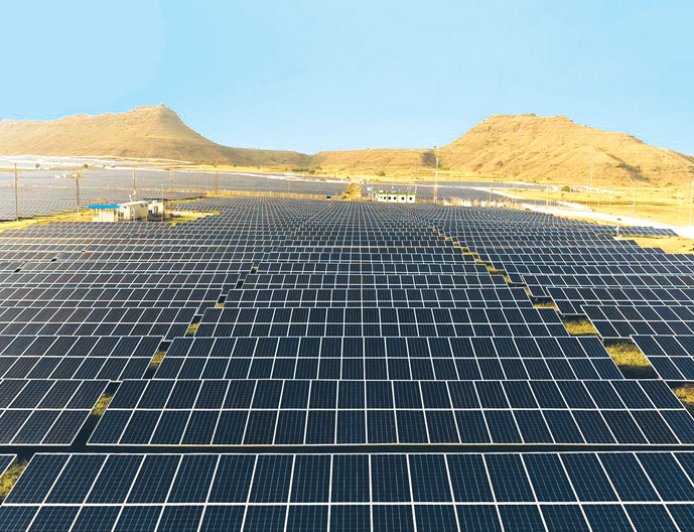Apraava aims to invest an equivalent of 1-1.5 GW per year in the sector for the next few years.

Naveen Munjal
Director - Business Development and Commercial, Apraava Energy
What are the prevailing trends in renewable energy segment? How do government policies support the segment?
The renewable energy (RE) segment is making good progress towards the goal of 500 GW installed capacity by 2030. In 2024, so far, bids of ~64 GW have been announced and capacity of 18 GW has been installed. Today, India’s total RE capacity has crossed the 200-GW mark, which is probably the fourth-highest in the world.
India has already achieved its previous Nationally Determined Contributions (NDC) targets and is on track to achieve the revised targets for 2030. These include a 45% reduction in emission intensity, 50% share of RE in total installed capacity, and three billion tonnes of additional carbon sink.
The Central Government is taking significant steps to support ‘Make in India’ efforts in the sector. The trend is shifting from importing solar panels to manufacturing them in India, although cells continue to be imported to a large extent. India’s solar panel manufacturing capacity has increased to ~64 GW. Cell capacity, too, is increasing and probably with the Approved List of Models and Manufacturers (ALMM) requirement on the cells, it will get a further boost. In August 2023, the government also announced a combined target of around 60 GW/336 GWh for battery storage and pumped hydro storage solutions under the National Energy Storage Framework.
The shift from pure RE to RE-plus-storage is also evident in the way new tenders have been announced. The government has announced tenders of different types (including standalone Battery Energy Storage System (BESS); Solar + BESS; Solar + Wind + BESS) and this is going to be the way forward. The tariff is in the very attractive range of Rs 3.4-4.3/kWh, depending on the combination used and the Plant Load Factor (PLF). Storage is fast becoming an important part of the grid.
However, there are some challenges that need to be addressed. Transmission capacity needs to be significantly augmented, particularly in RE-rich states to enable evacuation of the additional power that’s generated. Currently, transmission capacity addition lags the generation capacity addition. This results in delays in RE projects, and sometimes even impairs the viability of projects.
With India setting the goal for carbon neutrality, how do you look at the growth of renewable energy capacity in the country?
Carbon neutrality by 2070 is a distant goal but there’s no doubt that the country will need to work towards it from now itself with intermediate milestones. Presently, around 75% of India’s energy demand is met by fossil fuels. The demand for energy is growing so rapidly that even if India were to achieve the target of 500 GW of RE by 2030, it might still account for a small portion of the total energy demand, as the demand for electricity too is increasing at a pace not experienced before. With the focus on manufacturing coupled with increasing per capita incomes, the electricity growth rate is expected to remain higher than the GDP growth rate for a period of time. Hence, more will need to be done to achieve carbon neutrality.
 On the positive side, many industrial houses are setting carbon offset goals for themselves and are transitioning their energy sources from fossil fuel to RE and RE-plus-storage. Many have set up captive RE facilities to meet their in-house energy demand. Green hydrogen is an important piece of the carbon neutrality jigsaw. It can help in decarbonizing applications such as shipping fuel, DRI steel, heavy transportation and others. The Central Government has set a goal of production of 5 MMTPA under the India Green Hydrogen Mission. Producing this hydrogen will itself require about 125 GW of RE. Thus, even as India explores multiple avenues of decarbonization, RE will remain at the core of most efforts.
On the positive side, many industrial houses are setting carbon offset goals for themselves and are transitioning their energy sources from fossil fuel to RE and RE-plus-storage. Many have set up captive RE facilities to meet their in-house energy demand. Green hydrogen is an important piece of the carbon neutrality jigsaw. It can help in decarbonizing applications such as shipping fuel, DRI steel, heavy transportation and others. The Central Government has set a goal of production of 5 MMTPA under the India Green Hydrogen Mission. Producing this hydrogen will itself require about 125 GW of RE. Thus, even as India explores multiple avenues of decarbonization, RE will remain at the core of most efforts.
How is technology progressing in energy storage? How will this enhance the solar and wind energy segments?
Major advancements are happening in the storage space, both at the technology level and the engineering level. Sodium-ion batteries have been launched, although not on a commercial scale, and while it has some catching up to do with the lithium-ion-based ecosystem, it is a very promising development.
Lithium-ion cells have seen huge improvements in design. Today, a 330Ah cell and a 2.5MW/5MWh container have become the norm. Efficiencies in manufacturing have brought down the amount of Lithium Carbonate used in the cells. This, together with an ‘excess supply’ situation, has resulted in a drop of more than 50% in the prices of the lithium-ion cells in the past year itself. This is reflected in the standalone BESS tenders, where extremely competitive prices are being discovered.
The reduction of BESS cost is a trend that is expected to continue, and it bodes well for the solar and wind power segments. RE, due to its variable nature, can cause issues with grid balancing. This is especially true in the case of solar power, where generation peaks in the afternoon (when demand is lower) and becomes zero at sunset (when demand peaks, usually from 6 pm to 10 pm). This can cause an imbalance in the grid and put coal-based assets under pressure to ramp up and down to meet the grid requirements in the absence of the more flexible gas-based power. Without energy storage solutions, it would have been very difficult to integrate RE into the grid. Energy storage is thus essential for achieving the 500 GW RE target.
Can you give us an overview on your renewable energy projects?
Apraava has been one of the pioneers of the wind energy from 2007/8. It was one of the first IPPs to set up wind capacities. Our current portfolio has operational wind capacity of approximately 1,200 MW and 250 MW of solar. We have a portfolio of 900 MW of RE projects under construction, comprising 600 MW of solar and 300 MW of wind energy. Additionally, Apraava has many projects in early stages of development, which will be used for our future pipeline.
What are your expansion plans in line with the country’s RE capacity enhancements in future?
Apraava aims to invest an equivalent of 1-1.5 GW per year in the sector for the next few years. In addition to pure RE projects, we also plan to participate in standalone BESS projects as well as hybrid projects comprising a mix of storage and solar and wind.
How do you look at the future market opportunities for renewable energy?
In view of the 500 GW RE target and India imminently becoming the world’s third largest economy, we can expect that there will be no dearth of opportunities in the power sector, especially the RE sector.
There is also a large opportunity in the manufacture of key equipment such as solar panels, cells, wind turbine generators (WTGs), and BESS cells and containers. Green hydrogen, too, is likely to give a big boost to the power sector and contribute to carbon neutrality. Capital does not seem to be a constraint at the moment. There is enough global capital looking to tap the huge opportunity that India presents. The key to realizing this potential lies in establishing the required transmission infrastructure and addressing the challenges around land acquisition & Rights of Ways.







